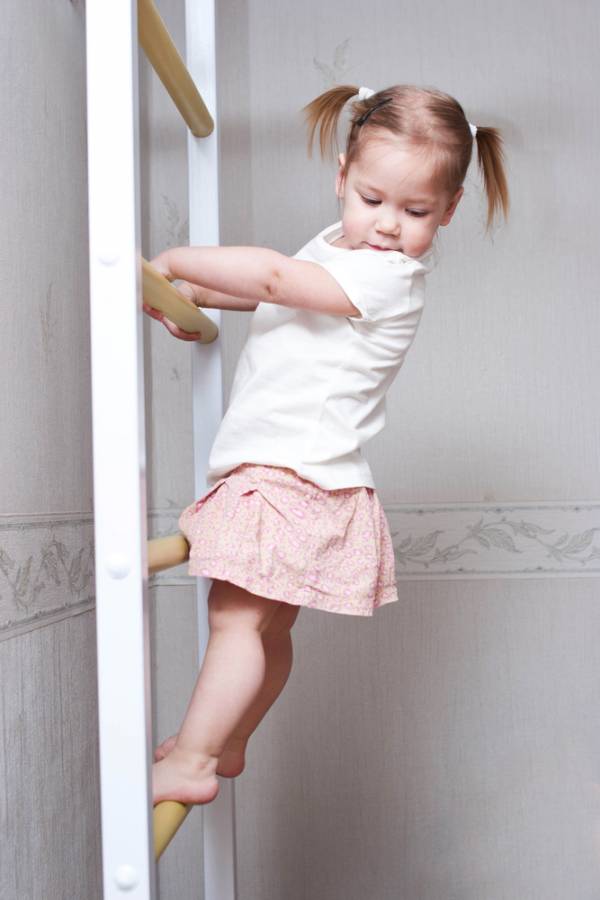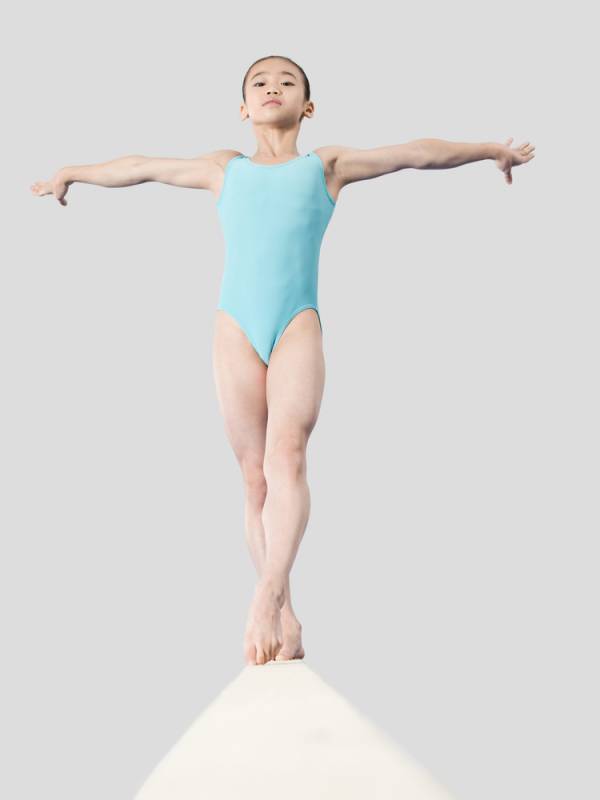In last week’s interview with coach Roger Harrell we talked in depth about teaching gymnastics to adults. There are unique challenges to instructing adults and Roger gave some excellent tips on how to find good coaching.
This week we talk with Roger about the other end of the spectrum – gymnastics for children. Gymnastics is an excellent way to develop coordination, balance, and body awareness. Whether a child chooses to pursue gymnastics as a sport or move on to other activities, it serves as one of the best possible bases for creating life-long, quality movement patterns.
One of Roger’s first coaching jobs was instructing children. While he was on the gymnastics team at UC Davis, the local city program asked him to coach the boys’ classes. When I asked Roger what the first things he learned coaching kids was, he said:
It was really about kid management, how to take what I know and develop that and get the kids going on that and understand how to relate what I understood about gymnastics to the kid. There was the learning of how to deal with class management and the discipline side of things was completely new to me. At first I wanted to be friends with all the kids and that just didn’t work. So it’s like when you run classes of 18-20 of 9-10 year olds, coaching a group of adults is trivial.
In particular Roger had to keep in mind the attention span and focus of children as compared with adults:
With adults you give them assignments and you just expect it to be done. With the kids you have to be more creative with how you set stuff up so it’s engaging and fun no matter what. With kids in the recreational program you have to make absolutely everything fun or you just lose them.
In addition, as a coach for kids, you have to think about the bigger picture:
You’re starting with a three year old and thinking, “Where do I want this person to be when they’re 18?” and actually thinking through that entire fifteen year time block. What do I need to do today to set them up for success twelve years from now?
And while not all children may be on the path to competitive gymnastics, having a coach who can see the bigger picture and slowly build them into a well-moving human machine is ideal. But how do you pick out a good coach? And how do you know which school is good for your kids?
Roger shared his thoughts with us:
What Age to Start?
- The start point is really as early as you want to. We have a program that starts kids as early as 14 months. That’s where we call it “movement education” and we actually deal with movement strategy. They’re just starting to
 walk. You’ll get these kids who are toddlers and they can kid of walk around a little and they’re starting to learn how to climb. They will climb themselves up on a narrow object and stand on it. And once they’re on top they have no idea how to get back down. They can’t’ jump down. They don’t know how to reverse that motion, squat down, lie down, and move their legs off, and so they’re completely freaked out. We actually teach that kind of strategy.
walk. You’ll get these kids who are toddlers and they can kid of walk around a little and they’re starting to learn how to climb. They will climb themselves up on a narrow object and stand on it. And once they’re on top they have no idea how to get back down. They can’t’ jump down. They don’t know how to reverse that motion, squat down, lie down, and move their legs off, and so they’re completely freaked out. We actually teach that kind of strategy. - Gymnastics in earnest, you’re looking at a start point of three or four years old. If you want to be competitive you better have started by the time you’re six. That’s just the reality of the sport.
- As far as when to start if you don’t start then – any time is just fine. If you’re 13 or 14 years old and you want to learn gymnastics, go do it. Figure out how to make that work because it’s still going to yield dramatic benefit. I am a living example of that.
Choosing a School/Coach?
- The thing is the best thing to do is go observe a class. You want to walk into the facility. You want to watch the classes. Do the coaches have a good control of the class? Are the kids active for the dominant length of the class? That’s something that there are two schools of thought on the gymnastics side. One is the sit and wait-your-turn class where it’s very easy to control because you’ve got seven kids, they wait in line, and one kids goes at a time. But then those kids are only spending ten minutes actually doing gymnastics in an hour class. That’s appalling to me. You want to look for as much continual activity as possible and that the coaches look like they’re having fun. If the coaches look bored or like they don’t want to be there, you don’t want to be there because your kids are going to be miserable. You’re looking for enthusiastic classes. You’re looking for smiling kids. You’re looking for control and that it looks like a safe scenario.

- If you’re looking for a developmental program to turn your kid into a competitive gymnast, you’ve got to look at what are the higher level kids in this gym doing. Is that program there? Do the coaches look like they have a keen eye for the biomechanics? With the kids, when we’re talking about starting at three years old, we’re actually pretty picky about all these little minor details. And you can be picky with the kids for some segment of their time. So, are these coaches actually addressing those minor body position issues even in the younger kids’ classes? While that is not the bulk of the coaching, is that fine-tuning being addressed at an early age? That’s not an issue if you’re not intending for the kid to go down the competitive track.
- Also, are the kids doing any sort of strength training at the end of their classes? If they’re not, then you’re missing something. Even if it’s just five minutes at the end of pushups or handstands against the wall or sit-ups or hollow rocks or whatever, but that there’s a dedicated approach to general strengthening.
Maybe you have children and you’re deciding what to enroll them in. Or you’re concerned about how to choose the right gymnastics program for them. The benefits of gymnastics for children are clear, however, when you observe adults trying to learn. A lifetime of “bad” movement is hard to unlearn.
As Roger shared, in regards to how he instructs kids at his gym, The Cave, “We talk about these movement patterns and base movement that just needs to be developed while they’re still learning to move in general. So you establish that this is just how you move, not you’re learning a new way to move.”
Want to learn gymnastics and don’t know where to start? Try Roger’s three weeks of featured programming, geared at teaching the adult athlete the basics of gymnastics:
Strength & Conditioning WODs from Roger Harrell
For more about Roger Harrell read part one of our interview:






